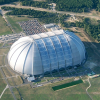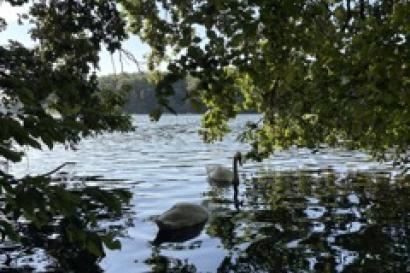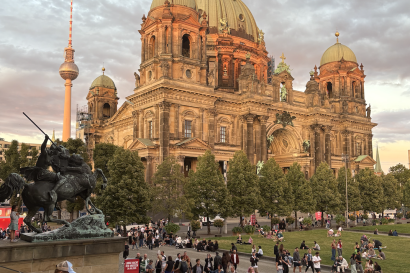Out of all of the places I am visiting for my thesis, I was most excited to visit Normandy. I went once when I was around 9, and I really had no understanding of what its significance was. I went to Pont du Hoc and was surprised by how much the ground was scarred, but that was about it. After having spent quite a while reading about World War II, watching all of Band of Brothers a dozen times, and studying the battle, I really wanted to return to Normandy with an appreciation for what happened there. I was not disappointed! The entire coast is littered with museums, bunkers, and memorials, and each one is a solid reminder of the magnitude of the battle. The American cemetery at Omaha beach was extremely sobering; graves stretched as far as you could see. Additionally, going down to the beach and seeing the difficulty that the men had to face in ascending off of the beachhead was terrifying. I had not realized how much plant life there was separating the men on the beach from the Germans and it would have been extremely hard to fight through it, especially while going uphill and being fired upon. On the other hand, Juno beach abutted up to a town, and men there disembarked and just walked right into the cheering French citizens’ hospitality. Despite that, they still faced heavy fighting later on, and their heroism cannot be understated. What surprised me most was how many bunkers dotted the entire coast. Obviously, I had read about the Atlantic Wall and knew about the fortifications, but it is still surprising to be walking along a beautiful beach and suddenly see a massive concrete pillbox with a rusting artillery piece sticking out. It got to the point where we just shrugged off seeing bunkers because they were so common. Although most of the landscape was unscarred (with the exception of Pont du Hoc, which they have intentionally left cratered), there were still reminders everywhere about what had happened there. In their windows, stores in Bayeux had signs reading “We Welcome our Liberators.” Every restaurant’s waiters and waitresses spoke fluent English (although I really didn’t like being the American Tourist who doesn’t bother learning the language). Tour busses came from both sides of the channel, with practically every place we stopped having 3 or 4 busses show up while we were there. One of the most striking and important observations I made was the frequency of schools visiting the sites. We saw somewhere between 10 to 20 school groups throughout our two days, and the students seemed genuinely interested in the sites. It’s reassuring to see that students are learning about the sacrifices of our forefathers and the brutality of war so that hopefully we do not repeat the same mistakes as we have in the past.

Robin Clower
<p>I am Robin Clower and currently I'm earning degrees in Secondary Education: Mathematics and German, as well as an additional major in Mathematics at Oklahoma State University (Go Cowboys!) I lived in Germany as a child, but am now headed back after studying Germany's language, culture, and history for four years at OSU. My main passion in life is teaching, so I hope to teach y'all something while I'm in Germany and learning about myself.</p>







